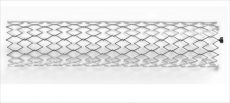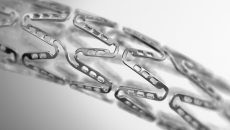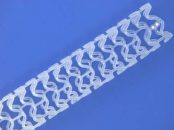Patients who receive chronic anticoagulation therapy and then undergo angioplasty are frequently discharged on a triple anti-thrombotic scheme that usually includes aspirin, clopidogrel, and warfarin. The optimal duration of this indication remains unclear, particularly for patients at high bleeding risk. According to expert consensus, patients receiving chronic anticoagulation may receive from 1 to 12 months of dual…
Self-Expanding Stents Are Superior to Balloon-Expandable Stents in the Iliac Arteries
Courtesy of Dr. Carlos Fava. Severe atherosclerotic disease in iliac arteries is experienced by 15% of all men and 5% of all women. TAC II recommends angioplasty for type-A, -B, and -C lesions. As regards stent type, self-expanding stent (SE, more elasticity) vs. balloon-expandable stent (SB, more radial strength), Reekers indicates superior target lesion revascularization (TLR) with SE. However, there…
Should We Begin to Use IVUS in CTO?
Courtesy of Dr. Carlos Fava. Currently, chronic total occlusions (CTO) are one of the obstacles that coronary angioplasties must overcome, particularly with the development of drug-eluting stents (DES) and new devices and strategies for these challenging lesions. However, there is little information on the safety, efficacy, and real clinical benefit of implanting stents of over 60 mm (known as full metal jackets, FMJ).…
Are Bioresorbable-Polymer Stents More Thrombogenic than Durable-Polymer Second-Generation Stents?
Courtesy of Dr. Cristian Jesús Rodríguez. Most stents currently used in percutaneous coronary intervention (PCI) are durable-polymer second-generation drug-eluting stents (DP-DES, with everolimus or zotarolimus). However, it has been argued that the persistence of such a polymer after complete drug elution is one of the main factors for a dangerous complication: stent thrombosis (ST). After…
SOLACI 2017 | BRS: Present & Future
Read articles on the main presentations of the second day of SOLACI-CACI 2017 Congress. See the presentation by Dr. Stephen Ellis, entitled “BRS: Presente y Futuro”. We are interested in your opinion. Please, leave your comments, thoughts, questions, etc., below. They will be most welcome.
SOLACI CACI 2017 | BRS: Presente y Futuro
Read articles on the main presentations of the second day of SOLACI-CACI 2017 Congress. See the presentation by Dr. Stephen Ellis, entitled “BRS: Presente y Futuro”. We are interested in your opinion. Please, leave your comments, thoughts, questions, etc., below. They will be most welcome.
SOLACI CACI 2017 | BRS at the crossroad: technological development to reduce complications
Read articles on the main presentations of the second day of SOLACI-CACI 2017 Congress. See the presentation by Dr. Patrick Serruys, entitled “BRS at the crossroad: technological development to reduce complications”. We are interested in your opinion. Please, leave your comments, thoughts, questions, etc., below. They will be most welcome.
SOLACI CACI 2017 | BVS: from clinical evidence to daily practice
Read articles on the main presentations of the first day of SOLACI-CACI 2017 Congress. See the presentation by Dr. Stephen Ellis entitled “BVS: from clinical evidence to daily practice”. We are interested in your opinion. Please, leave your comments, thoughts, questions, etc., below. They will be most welcome.
Post DES Dual Antiplatelet Therapy Still under Debate
The NIPPON trial (Nobori Dual Antiplatelet Therapy as Appropriate Duration) was a randomized study comparing a short dual antiplatelet therapy scheme (6 months) vs. a prolonged scheme (18 months) in patients receiving the Nobori drug eluting stent (Terumo, Tokyo, Japan) with a biodegradable abluminal polymer. It included 3,773 patients with chronic stable angina or acute coronary…
BVS: Controvertial Scaffold
Courtesy of Dr. Agustín Vecchia. The advent of resorbable vascular scaffolds (BVS) generated high expectations among interventionists because of its potential advantages over bare metal stents. However, when comparing BVS against the Xience stent, we observed an increased rate of events associated to the first device, to their detriment. Among the reasons behind this poor…
Everolimus DES are more effective and less costly than conventional BMS
Courtesy of Dr. Guillermo Migliaro. Drug eluting stents (DES) represented the greatest technological advance in the treatment of instent restenosis from conventional metallic stents (BMS), especially cobalt chromium everolimus eluting stents (CoCr EES), which have shown an excellent profile, and are mostly safer, compared to first generation DES. Indeed, several randomized studies and meta-analyzis have…









